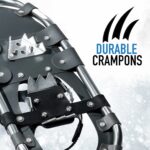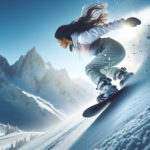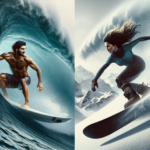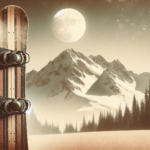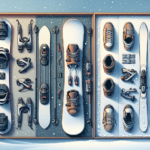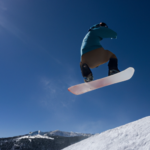Discover what gear you need to engage in snowboarding for an enjoyable experience as well as staying safe.
Snowboarding has become one of the most popular winter sports over the past few decades.
Snowboarding requires specific gear to do the sport safely and effectively. Let’s look at what you need to get started.

Board
The first thing you need, obviously, is a board. But which one should you choose?
The anatomy of a snowboard is important because it helps you understand how to ride safely. When choosing a snowboard, consider what type of riding style you want to do and where you plan on riding.
Freestyle riders prefer wider boards with wider waists while park riders are drawn to narrower boards with narrower waists.
Also, look at the length of the nose and tail. A longer nose makes carving easier and allows you to carve tighter turns.
A shorter tail gives you better control over speed. Finally, take a close look at the shape of the edges.
If you like to carve and carve hard, choose a board with wide edges. If you just want to cruise down groomers and hit jumps, go for a narrower board with sharp edges.
An all-mountain snowboard is a versatile piece of equipment that works well in most situations.
This type of board is usually built to handle a variety of different types of terrain including groomers, powder, parks, bowls, chutes and everything in between.
These boards are typically very stable and forgiving making it easy to learn how to ride them.
Boots
The boots themselves come in three categories:
- Freestyle
- Alpine
- Snowboard Cross
Freestylers generally prefer softer boots that allow a larger range of movement, while alpine boots are stiffer and give better support.
Snowboard cross boots fall somewhere in the middle. They are flexible enough to maneuver around obstacles, but sturdy enough to withstand the impact of landing jumps and flips.
Bindings
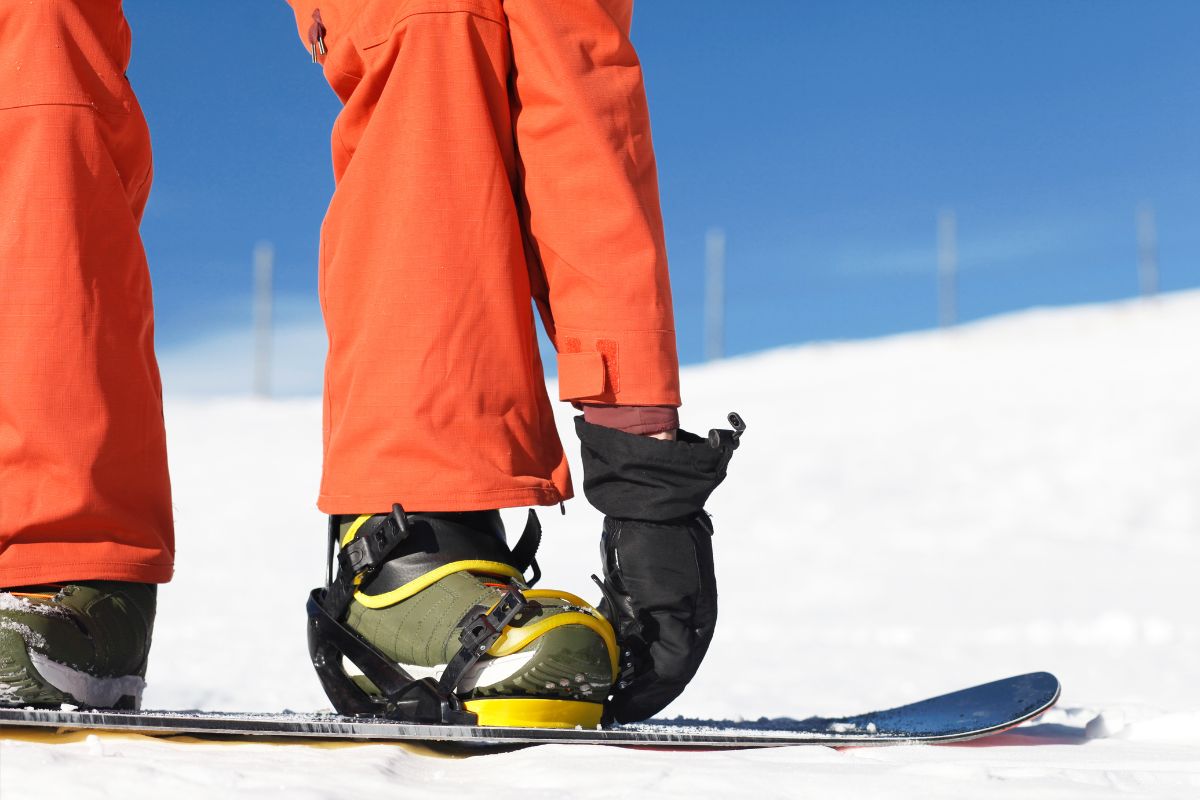
Snowboarding and alpine skiing both rely heavily on bindings. These devices securely lock riders’ boots into place on their boards.
They’re usually attached to the bottom of the board, but some models allow you to mount them anywhere along the length of the board.
While there are different types of binding systems, most involve a base plate that attaches to the board, and either a toe piece or heel piece that locks into it.
Snowboarders use toe pieces, while skiers use heel pieces. Some bindings come with multiple pieces; others require you to purchase additional parts.
The base plates vary in size depending on what part of the foot they fit over. Most are designed to accommodate a wide range of sizes, although some are narrower and smaller.
The toe piece is generally wider than the heel piece. If you want to adjust the angle of the binding, you’ll likely need to buy a separate wedge.
Soft Boots Vs Hard Boots
In snowboarding, the style of boot you wear affects how your bindings work. Riders use either soft boots or hard boots. Soft boots are softer and less durable than hard boots.
You can’t really tell much difference between the two unless you look closely. Both types of boots are very important to snowboarders (see also “What To Bring Snowboarding“) because they affect the way their legs move during tricks.
Hard boots are stiffer and provide better support. They don’t flex like soft boots do. Because they’re harder, they won’t break down like soft boots do.
This makes them easier to maintain and repair. However, hard boots make it difficult to perform certain tricks, such as kickflips, because the edge of the board doesn’t slide easily against the sole of the boot.
Flexible Bindings
Flexibility is an important factor when choosing a binding system.
A rigid binding will limit the amount of flexibility you have in your feet. It’s not uncommon for snowboarders to spend hours every day trying to find ways to increase the amount of motion they have in their ankles.
A flexible binding allows more freedom of movement. It also provides a smoother ride. That means you can land trick after trick without having to worry about breaking through the snow.
Flexible bindings are typically made from plastic, which is lighter than metal.
A good example of a flexible binding is the Burton Flex-Loc. It has a low profile so it sits closer to the ground.
This helps keep the rider’s center of gravity lower, making it easier to balance and control. The Flex-Loc also features a quick release mechanism that lets you quickly remove your boots.
Helmets
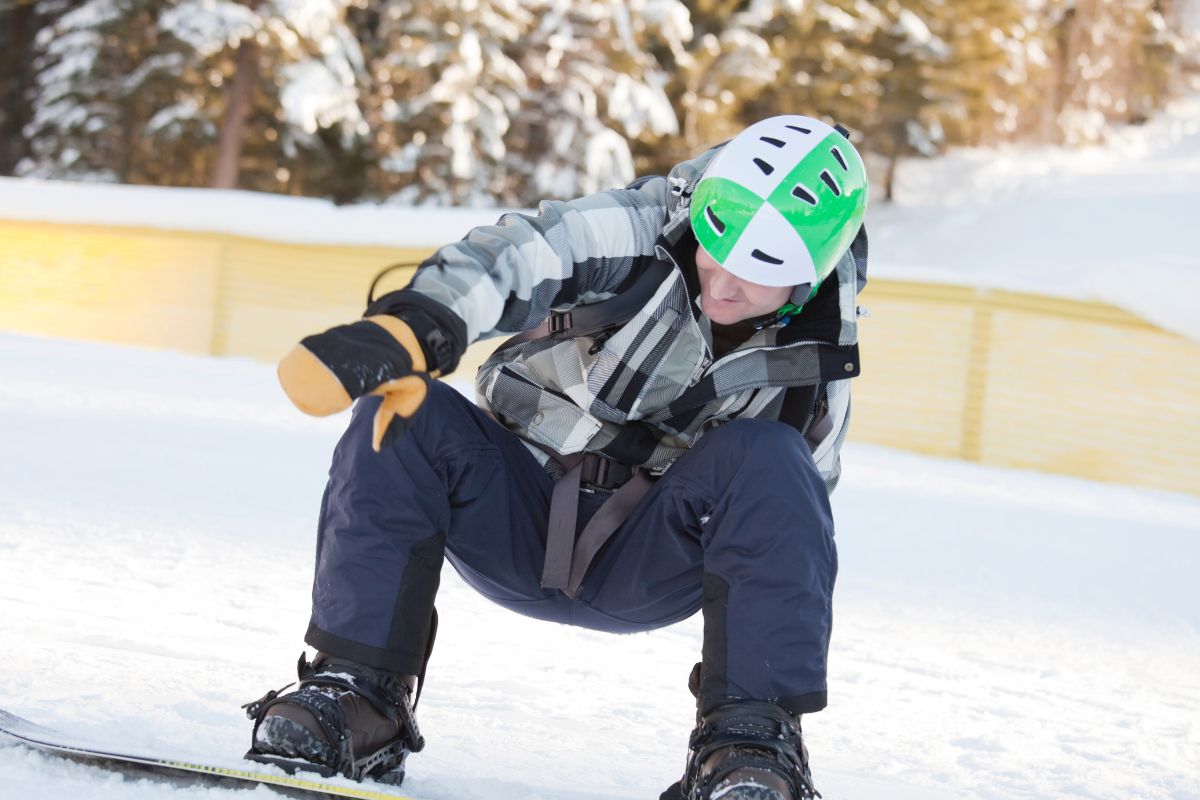
Wearing a helmet is something many riders overlook, but it is very important to protect yourself. There are different types of helmets out there, and each type has pros and cons.
If you do decide to purchase a helmet, make sure it fits snugly and securely around your head. Also, make sure it doesn’t interfere with peripheral vision.
Goggles
Snow goggles (see also “How To Keep Ski Goggles From Fogging“) help you see where you’re going and keep your eyes safe from flying ice crystals while riding .
They fit over your regular glasses, keeping them clean and dry inside. Snow goggles are easy to put on and take off because they don’t cover the entire face like full-face helmets do.
And they’re light enough to wear comfortably during winter rides.
Lenses come in a variety colors and tints, with different colors and tints being better suited for particular weather and visibility situations.
Some lenses offer UV protection, making them ideal for sunny days.
Others let in more sunlight to make it easier to see in low light. If you ride in snowy areas, choose a lens tinted yellow or orange.
Those shades reduce glare and reflect less blue light, helping you see better in bright daylight. When choosing a lens color, consider how visible it will be against the background of your helmet visor.
Cost
Snowboard passes run anywhere from $50-$100. So how much do snowboards and boots contribute to the overall cost?
A full set of bindings adds another $70-$80. Helmets range from around $40-$200 depending on brand, style, and size. Other equipment like goggles, gloves, and poles can add up to about $30 each.
Conclusion
Snowboarding is fun, challenging, and rewarding. It’s one of the best outdoor sports out there. However, it comes at a higher price tag than other activities.
There are some things you can do to save money. For starters, buy used gear instead of new. Also, look into renting equipment instead of buying it outright.
Finally, if possible, try to get discounts by signing up for a membership program. Happy snowboarding!
- How to Choose a Skim Board - September 10, 2023
- is Skim Boarding Hard? - February 8, 2023
- How To Wax a skim board - February 8, 2023


